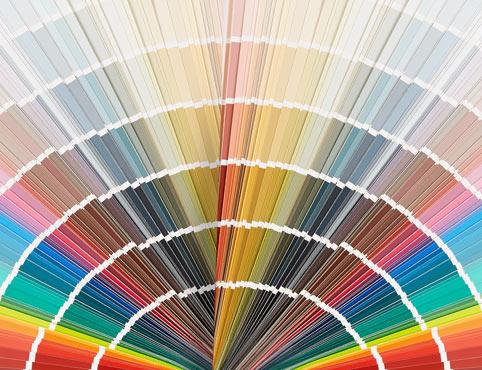Colour is the most powerful decorating element in our homes. Colour is memorable and above all personal. An understanding of colour can really help us achieve the goal of a pleasant , personal and comfortable home. There are hundreds of options but only one decision maker , that matters and that is You. The people who eat and sleep , entertain , play and rejuvenate in the spaces are the ones whose well-being is affected.
If we understand the basics of the colour , then we can make a perfect colour scheme.
The colours are divided into three categories
Primary colour- These are the three basic hues , red , blue and yellow. They are the foundation of the colour wheel and all other colours are derived from them.
Secondary colour – When two primary colours are mixed , they form a secondary colour . They are orange , green and violet.
Tertiary colour- When two secondary colours are mixed , they form a tertiary colour , like citron , olive , russet.
THE COLOUR WHEEL – The colour wheel is a complete picture of all the colours available , once you understand this , there will not be any problem in forming any colour scheme. In the colour wheel at the right , the primaries form a triangle with equal sides with in the circle , and the secondaries form another triangle opposite to that. Each colour has a ‘complement’ which is located directly across from it on the wheel. Thus , green is complement of red , orange is complement of blue.
A perfectly balanced colour scheme might use equal parts of three colours which are equidistant on the colour wheel . Interior designers often compensate for intensity by either tinting (adding white) or toning ( adding black ) or by graying (adding complementary colours ) . In these way they create contrast through a change in value (lightness and darkness ) or intensity ( brightness and dullness ) . With even this limited information , it is easy to see how the possibilities for combining colours are infinite and inviting. Using the tints and tones ,the total effect is lively and pleasing but not overwhelming , a beautifully coloured room. Now here are some of the colours with their effects and the nature they depict and the places where they are suggested to use.
RED : Red is the most dramatic , emotional and active of the three primaries . It is an especially versatile colour in its effects , enlivening interior spaces by creating excitement , warmth and elegance . The use of red suggests a bold and confident attitude. It is used in those areas where one needs excitement like the bars. It is less often used in sleeping area because of its energizing quality. The complement of red is green.
BLUE : Blue is the only colours which is the most universally equated with the beauty. Blue is timeless , linking the present with tradition and lasting values. It is the most versatile in expressive values. Psychologically, blue is associated with tranquility and contentment. In interior design , softer and lighter blues are generally preferred for the larger areas.
YELLOW : It is a powerful colour , both light in value and extremely intense in its purest form. It evokes a sense of energy and excitement. Yellow is a perennial favourite in interior design , combining with greens to provide the natural freshness and with red for gaiety and richness.
GREEN : Green is the most common choice of the designers. It is often used as a dominant room colour . Green goes with every other colour and makes it a natural neutral. It represents the greenery of the nature and thus provide the room with liveliness.
VIOLET : It seems to be a colour of emotional contrasts. Its paler tints are unabashedly romantic, fragile and quiet feminine . It enjoyed the popularity in the Victorian era and now as pure colours emerge again , beautiful violet is certain to be a player.
ORANGE : It is amazingly versatile , capable of emitting great energy in its purest form and as an earth tone , it evokes warmth , comfort and reassurance. Nowadays , the lighter orange , popularly known as peach is common in use as it gives a cool effect.
PASTELS : Pastels are simply lighter tints of any hue , white added to red yields pink and light pink is a pastel. There is not any particular definition for a pastel colour but when colours become so light that they almost seem to be white , they are pastels. The pastels are becoming more and more popular as they crate the most sober and elegant look.
NEUTRALS : Using neutrals does not mean not using colour . Any low intensity colour that is used as a background for other accent colours , features , furniture and objects in a space can be classified as neutrals. Neutrals are practical and by changing accessories and fabrics the look of space can be dramatically altered against the same neutral background.
Enjoy colour , take these tips from the professionals and then you can become creative. You must think about the people in your home who matter the most for you and then imagine the things you do together and then finally go for a final colour scheme.
